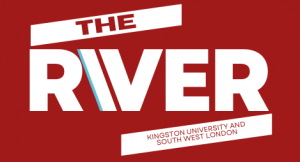Craniosynostosis is a rare genetic condition, Gabrielle Nowell tells The River about how this condition impacts her daily and future life.
With graduation and the looming workplace coming up, Gabrielle Nowell exists on the cusp of disabled and able-bodied – which makes job applications even trickier to navigate.
Media skills student Nowell, 21, has complex multi-sutural craniosynostosis – a rare genetic condition where a baby’s skull does not form properly, resulting in an unusual head shape according to the NHS.
“I can physically do everything like everyone else, but I do have limitations.”
Unsure whether to tick yes or no for disability on applications, she says: “I always just say that I’m in between, I’m in the middle of it. I never know whether to say if I’m disabled or able-bodied.
“It’s not just me with craniosynostosis. It’s just kind of difficult to say whether you’re disabled or not disabled.”
“What frustrated me about being in-between is it’s hard for me to specify if I’m disabled or not. I feel like every time I say I have scoliosis and learning difficulties, I immediately don’t get the job.
“I have minor learning difficulties and slow processing skills, so it just takes me a bit longer to get things done.
“I can still do everything a normal person can. I just need to work a way around it,” she says.
Having suffered from low self-esteem and anxiety in the past, Nowell now wants to use her newfound confidence to work towards greater representation of disability in the media and is using her condition as inspiration.
Aspiring to work within film and media, Nowell says: “I think my confidence is better, I’m definitely challenging myself a bit more. I definitely have been using the condition as inspiration, which I think is probably one of the best things I think I’ve done,” she continues.
Nowell created a YouTube video about her condition for one of her assignments and is currently making a documentary about craniosynostosis and the representation of disabled female entertainers in the new media.
“That was something I never really thought I’d do. I’d always wanted to do it, but I just always talked myself out of it,” she adds.
“Something I wish I told my younger self, or that I did when I was younger, was to be more open about my condition because not a lot of people know about it.”
When Nowell was 15-years-old, she juggled both the weight of her latest skull surgery and revision for her GCSEs.
After having her first skull surgery at just nine months old, she has undergone approximately four procedures at Great Ormand Street Hospital.
Nowell recalls: “It was a bit scary, but I think the more surgeries you have, the more you get used to it.”
The surgeries that Nowell had drastically improved her quality of life: “If I didn’t have the surgeries, I would definitely have a very different lifestyle than I do now.
“I would have probably had brain damage or ended up in a wheelchair, so I am quite fortunate.”
Nowell explains her craniosynostosis: “It is when one or two joints in the skull, which are called sutures, they fuse together before the baby is born.
“When a baby is born with soft spots, that’s because sutures in the skull haven’t fused together, so it gives the skull flexibility to be born. But for people with craniosynostosis, that’s not really the case.
“Our sutures fuse before we are born, so we don’t have that flexibility.”
Nowell was 18 when she and her family discovered what had caused the condition.
“It was a chromosome duplication and translation. My dad has got the translation of the chromosomes 15 and 22, which I also have.
“I have an extra branch of chromosome 15, so we think that is actually what caused it,” she says.
Nowell says that the condition is unique to each person who has it.
“There are different symptoms that make up craniosynostosis, so each has its own symptoms and their own characteristics.
“A lot of people with craniosynostosis, their fingers are fused, so they’re more disabled than me,” she adds.
The multiple surgeries on her skull left Nowell with a scar across her head in one straight line.
She says: “My scar is really paper-thin, so every time in the summer, I would end up having to wear a hat or a headscarf to protect my head.
Lately, those having skull surgeries are left with “zig-zag” scars which Nowell would have preferred because it means they are more invisible and covered by hair.
Having a condition that few people know much about, in addition to the lack of representation in the media, meant that Nowell could hide it away.
Throughout her life, only a select few knew about her craniosynostosis.
“Only my family and really close friends knew about it. I only started being more open about it fairly recently.
“It has taken me a while to trust people knowing about the condition, only because I get scared of how people see me afterwards because I don’t want to lose people over something I can’t really control.
“But I just try and not let it define me as a person and try to do as well as I can,” she adds.
“That’s one of the reasons why I’m trying to be more open about it because it is a rare condition.
“It’s not really well represented in the media, I don’t think.”
Wonder, a 2017 film centred on a young boy with facial differences, reminded Nowell of her childhood.
However, the actor did not genuinely have a condition, so the lack of real representation annoys her.
Consequently, it is this veneer of representation that Nowell wishes to tackle in her current and future work.
